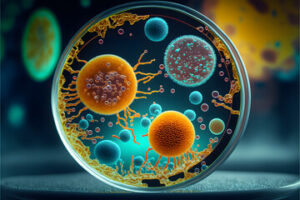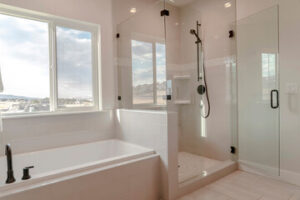Moisture is the leading cause of mold growth, and hidden moisture can lead to health problems and structural damage. It’s important to have any suspected hidden mold growth professionally inspected.
Before the inspection, it’s a good idea to close your doors and windows. This maximizes the concentration of spores for easier identification. Call Mold Testing NYC experts today.

- It’s A Health Issue
Molds are microscopic organisms that can be found in the air and on surfaces of building materials and furnishings. They produce spores which, when inhaled, can cause respiratory problems for those with compromised immune systems. Mold spore counts vary from day to day and can also be affected by weather conditions.
The good news is that the vast majority of molds do not harm healthy individuals. However, there are exceptions to every rule, and certain populations (children and infants, the elderly, immunocompromised patients) are more susceptible to illness caused by molds.
If you see dark spots on your walls, have unexplained health issues or just suspect you have a mold problem, swab testing is the first step in addressing the issue. Swab tests will help you determine if you have mold and what type it is. Depending on the results, your mold specialist will recommend a course of action.
Other testing methods involve analyzing a sample of mold growth in a lab. These methods can identify a portion of the live molds present in the sample but may miss or undercount those that were not living at the time of sampling or won’t grow well on the nutrients used to incubate the samples. They can also take days or weeks to get results and are expensive.
In some cases, DNA-based detection can positively identify specific mold species. This can help identify problematic strains and determine how quickly they are growing. However, this type of testing is still relatively new and more costly than bulk or surface sampling.
The best way to prevent and address a mold problem is to hire a professional with experience, advanced training, and specialized equipment. A reputable company will offer both visual and microscopic analysis and can use its expertise to find hidden molds. They will also provide a written report with recommendations and guidance on how to proceed. Often, the cost of an inspection is significantly less than the cost of cleanup and remediation. One of the biggest mistakes that people make is concluding that a mold problem does not exist because the test results are inconclusive or negative.
- It’s Property Issue
Mold growth can damage building materials, including wood framing, drywall, and paint. Undetected and untreated, this can lead to expensive home repairs and may significantly lower property value. Regular mold inspections help to ensure that a property’s value is maintained and that mold issues are addressed promptly before they can cause significant damage.
Many different methods can be used to detect mold spores in air, settled dust, or on surfaces of building materials and furnishings. However, these methods are not particularly good at identifying specific types of molds. In general, they can only give a good description of the live molds present in the sampled environment, missing or undercounting those that were not living at the time and location of the sampling or those that don’t grow well on the nutrients used for incubation.
A skilled investigator can provide clues to the presence of mold growth in a given situation, but testing is never a replacement for a thorough visual inspection. For example, a leaky roof or high humidity levels can result in mold growth in attics and basements. A thorough visual inspection can reveal these problems before they result in major damage or health issues.
Mold can also appear in hidden places such as behind walls, underneath floors, and in ceiling cavities. Mold grows in damp, poorly ventilated areas and can cause extensive and costly damage to building materials over time. Regular mold inspections can reveal such hidden mold problems before they become serious and expensive.
Getting rid of mold is easier and more cost-effective than repairing the damage it causes. For this reason, it is important to take steps to prevent mold from growing in the first place. This can be achieved by reducing moisture, ensuring proper ventilation, and making sure that any water leaks are repaired right away. It is also helpful to use a moisture meter and inspect for visible signs of dampness such as warped wallboard or plaster, especially in bathrooms and kitchens. In addition, a professional can recommend ways to improve airflow and reduce humidity in the home.
- It’s A Safety Issue
Mold spores pose health risks for everyone, especially individuals with existing respiratory conditions and those who are sensitive to Stachybotrys chartarum (black mold). But it’s important to keep in mind that not all species of mold are harmful and most types of indoor fungi will not trigger any significant health problems. The key is to avoid prolonged exposure and to prevent mold spores from invading the home environment in the first place.
This is why regular inspections are crucial for homeowners. In addition to keeping moisture levels under control, mold inspections can also help detect the presence of hidden mold. Mold growth may be hidden in wall cavities and attics or behind cabinetry, wallpaper, and paneling. It can also grow on the backside of drywall carpet pads and ductwork. Visually inspect all areas of the house that can be easily accessed and search for musty odors.
If a mold issue is discovered, swab testing can help identify the type and concentration of the mold spores in your home. This allows for effective remediation strategies to ensure a healthy home environment.
In contrast, air sampling methods can assess the general levels of spores in your home and provide insights into the overall indoor quality. However, they can be difficult to interpret since a sample only provides a snapshot estimate for a particular time and location.
Mold spore counts can fluctuate from one day to the next, so it is critical to conduct frequent and consistent tests. This way, you can get a more accurate picture of the amount of spores in your home over time.
Fortunately, most mold issues can be addressed with relatively less invasive and expensive remediation methods than other more invasive remediation methods. This is because addressing mold in the early stages usually requires less extensive demolition and replacement of building materials. In addition, a mold-free home offers an attractive selling point for property buyers and reduces the risk of long-term damage and health issues for occupants. In addition, regularly scheduled mold inspections and prompt remediation will help homeowners maintain their property values.
- It’s A Cost Issue
Molds can eat away at the structural integrity of a building, leading to costly repairs down the road. Detecting mold growth early on with an inspection will allow you to fix the issue before it gets out of hand and save you money.
Several testing methods exist for finding molds in the air, in settled dust, and on surfaces of building materials and furnishings. However, some of these methods are not able to distinguish between the complex mixture of mold particles that naturally exists in every occupied indoor environment and those spores that have accumulated indoors as a result of a serious and ongoing problem. Additionally, these methods can often miss or undercount those molds that are not living (or that cannot grow well on the nutrient media used for incubation).
A basic inspection typically includes tests for common fungi like Trichoderma and ulocladium. These molds are typically found in the outdoors but can also make a home their own in moist environments. Fusarium is another toxic mold that can be found in homes and can cause problems such as infection of the nails, cornea, or even a localized rash. This is a more dangerous type of mold and typically requires a special stain test and a lab test to determine whether it’s a serious issue or not.
Aspergillus and the genus of fungi that it belongs to are also often found in homes, and these spores can lead to lung illness and even death. These fungi can be found in damp areas and often thrive on the surfaces of stored food, such as soy sauce and sake. Aspergillus is often a pink color and can be difficult to spot. For these reasons, most inspectors will use a moisture meter to locate any problems and a camera or endoscope to get into tight spaces where mold might be growing.
Moisture is the main culprit in most cases of mold growth, so focusing on the moisture level in a space can be an effective way to uncover hidden mold issues. This can be done with a basic moisture meter, or it can be more advanced with tools that can measure the moisture content of the wall and other areas in your home. These types of meters can be very useful for locating leaks that could be contributing to a hidden mold issue and helping you find the source and repair it quickly.








